Paprika is the go-to spice for hundreds of home cooks. You can use it to make delicious Asian sauces, various rubs and sauces for pork chops, or just splash some in your food. It’s the perfect spice for anything and everything. But what if you run out of this wonder spice? Well, I’ve got some of the best substitutes for paprika that can be hiding on your shelves.
You can substitute paprika with cayenne pepper, chipotle powder, chili powder, hot sauce, and smoked paprika. But this isn’t all, so let’s hop into every paprika swap you can use!
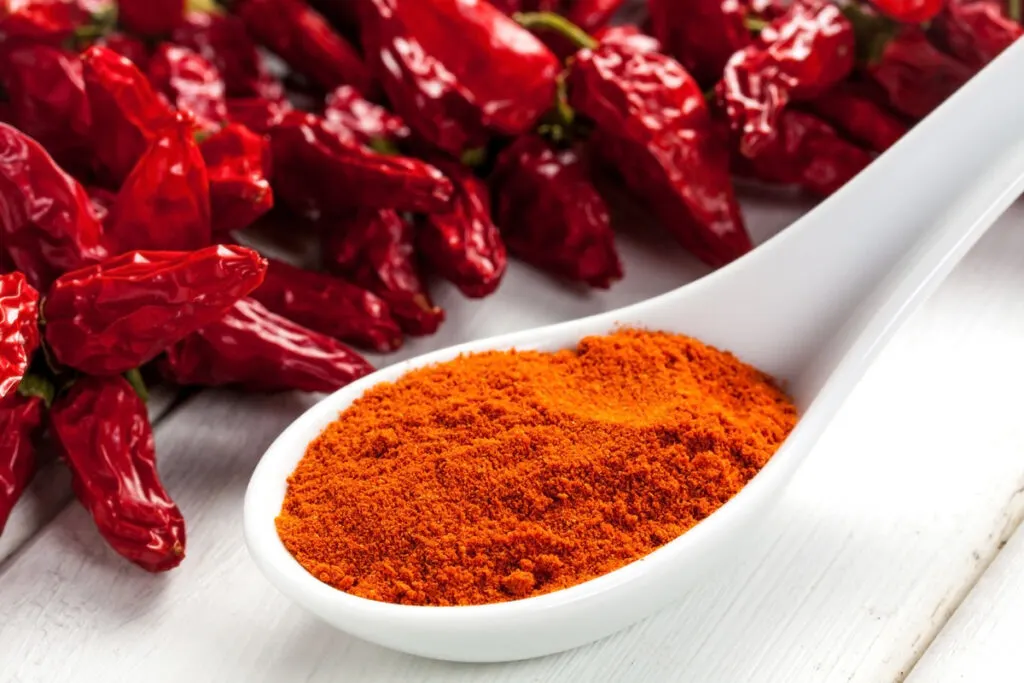
Jump To
🤷 What is Paprika?
Paprika is a spice made from ground sweet red peppers. It’s originally from Central and South America but is now produced in many countries worldwide, including Spain, Hungary, and the United States. This spice can come in different varieties, including sweet, hot, smoked, and Hungarian, with sweet paprika being the most commonly used type made from mild red peppers.
🧑🍳 How to make paprika
To make paprika, start by selecting ripe red bell peppers. Slice the peppers into thin strips and remove the seeds and membranes. Then, dry the strips in a low oven or dehydrator until they are brittle. Finally, grind them into a fine powder using a spice grinder or mortar and pestle.
📌 What is Paprika Used For
- Seasoning meat: It’s commonly used to season meat dishes, such as goulash, chicken paprikash, and sausages. It can be used as a rub or added to the marinade for the meat.
- Flavoring soups and stews: Paprika is often used to flavor soups and stews, such as Hungarian goulash soup, Spanish seafood stew, and Moroccan harira soup.
- Garnishing dishes: This spice can be used as a garnish to add color and flavor to a variety of dishes, such as deviled eggs, potato salad, and hummus.
- Seasoning vegetables: It’s a fantastic seasoning for roasted or grilled vegetables, such as potatoes, carrots, and bell peppers. It adds a sweet and smoky flavor to the dish.
- Making sauces and dips: Paprika is also used to make a variety of sauces and dips, such as romesco sauce, aioli, pimento cheese, and various spicy chicken sauce recipes.
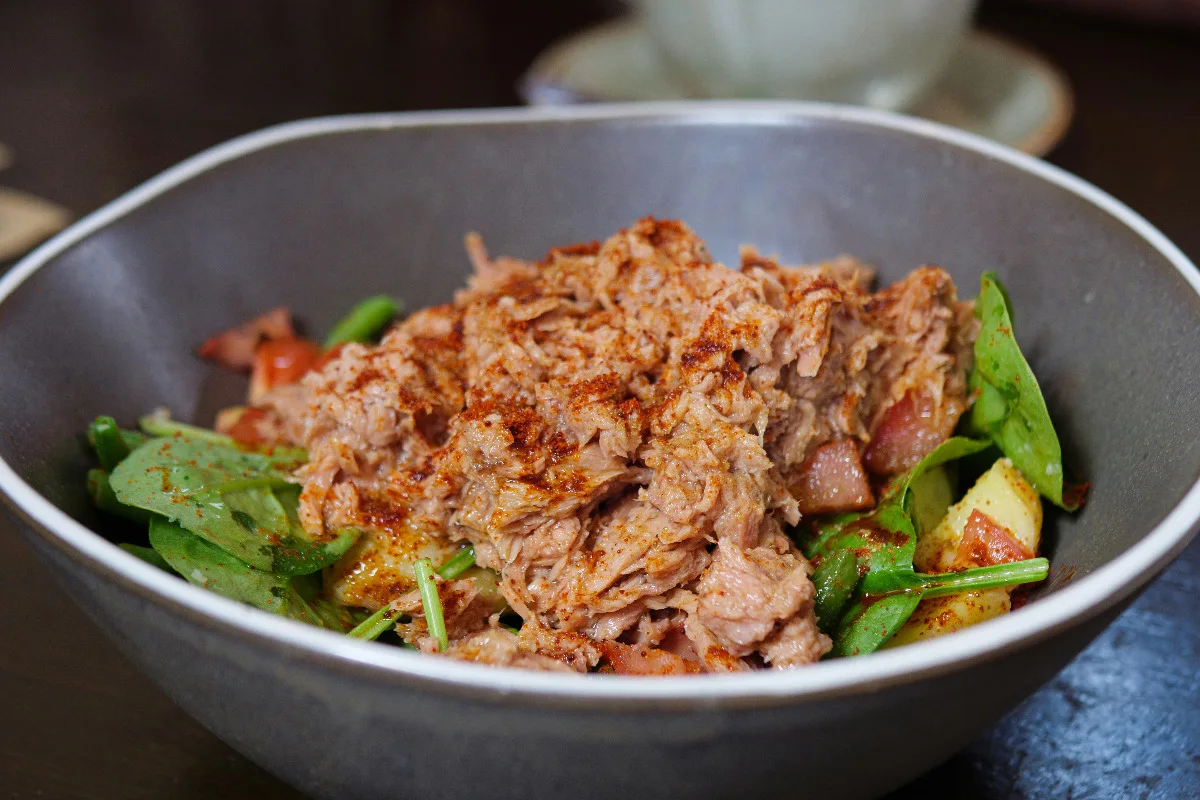
💡 Best Paprika Substitute
Black Peppercorns
1 teaspoon of paprika = 1 teaspoon of cracked black peppercorns
Black peppercorns are a delicious, easy-to-use swap for paprika made from the dried fruit of the Piper nigrum plant. You won’t have a problem with texture as they come in different forms like whole peppercorns, ground pepper, and even in oil or vinegar infusions. The origin, how they’re processed, and the freshness will also affect heat and certain aspects of taste, so make sure you pick one that suits your palate.
Cayenne Pepper
1 teaspoon of paprika = 1/2 teaspoon of crushed cayenne pepper
Cayenne pepper is a fiery option made from dried and ground cayenne peppers. It’s often used to season meats, vegetables, soups, stews, and even desserts, but you can swap it out for paprika in any recipe. It does pack more heat than paprika, so you’ll just want to add a splash of it when substituting it. If you can’t find any or want a milder spice, you can use some cayenne pepper substitutes.

Bell Peppers
1 teaspoon of paprika = 2 teaspoons of bell pepper powder/chopped bell peppers
Bell peppers are a popular, colorful, and nutritious swap for paprika. They come in green, red, yellow, and orange and have a slightly sweet and tangy taste with a mild heat level. The crispness of the bell peppers is accompanied by low calories and high vitamin C. Perfect all-roundness for paprika swapping, but it does lack the smokiness you’re looking for. But you can add other ingredients to remedy this.
Chili Powder
1 teaspoon of paprika = 1 teaspoon of chili powder
Chili powder is one of the most common kitchen spices around. It’s the perfect heat swap for paprika as it’s made from spices like ground chili peppers, cumin, garlic, and others. While it may lack that robust smoky flavor you’re looking for, you can easily add ingredients to it thanks to its relatively neutral flavor. If you can’t find any or want an even better flavor, you can try some chili powder substitutes instead.
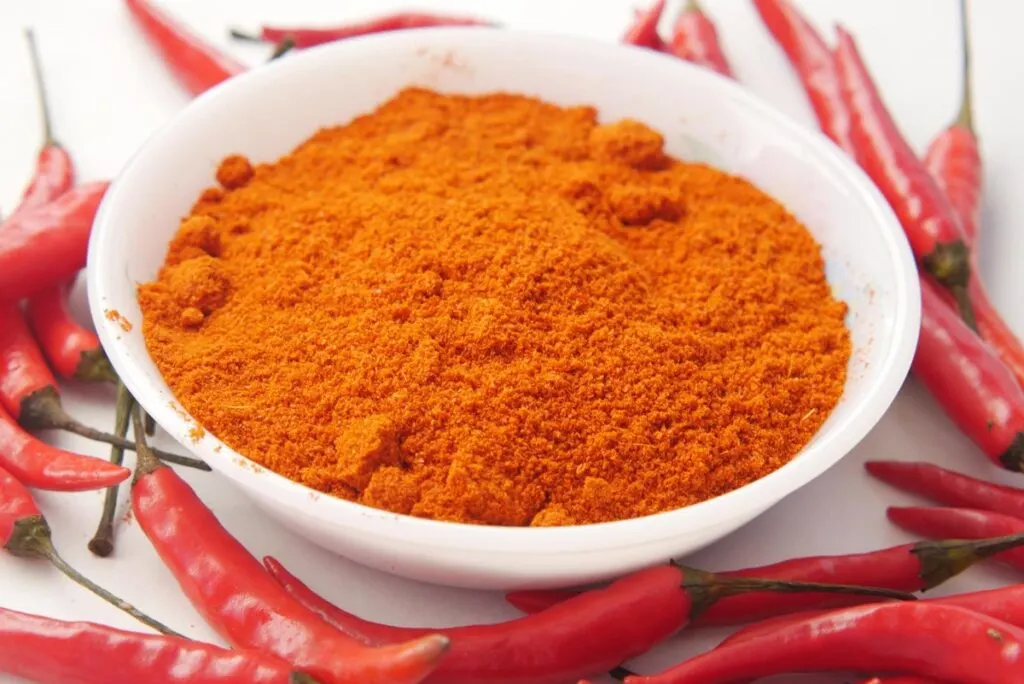
Cajun Spice
1 teaspoon of paprika = 1 teaspoon of Cajun spice
Cajun spice is a fantastic blend of Louisiana spices like paprika, cayenne pepper, onion powder, and garlic powder. This creates a perfect spicy, smoky, and bold swap for paprika. The amount of cayenne pepper used can vary, so make sure to taste a bit first. If you’re sensitive to heat, it’s best to use less cajun spice or choose a milder variety. Though, you can mix it with other spices for an even better spice and flavor experience.
Chipotle Powder
1 teaspoon of paprika = 1 teaspoon of chipotle powder
Chipotle powder is a perfect alternative to paprika, featuring a similar smoky taste and slightly higher spice level. The smoked and dried jalapeno peppers give it the perfect combination of flavors to match paprika. It’s a good source of vitamin A, which supports a healthy immune system and helps with bone growth. You can also use different chipotle pepper substitutes if you can’t find this powdered form.
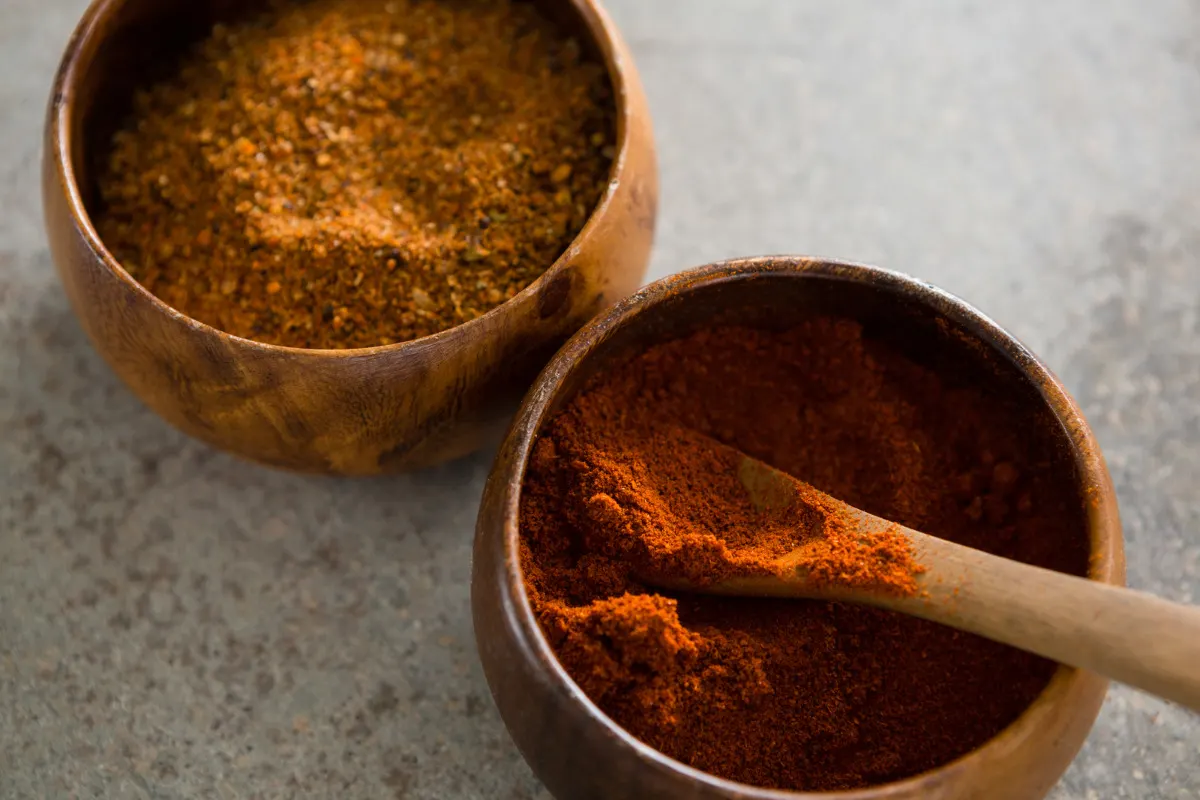
Crushed Red Pepper Flakes
1 teaspoon of paprika = 1 teaspoon of crushed red pepper flakes
Crushed red pepper flakes serve as a suitable substitute for paprika thanks to their similar fiery heat. While they’re a great heat swap, their flavor lacks the smokiness and sweetness characteristic of paprika. The bulkier and coarse texture can also leave much to be desired. But if you want convenience and a similar heat and don’t have a problem throwing in extra ingredients for a similar smoky flavor, this is just the pick.
Aleppo Chili Powder
1 teaspoon of paprika = 1 teaspoon of aleppo chili powder
Aleppo chili powder is made from dried Aleppo peppers, which give a delicious fruity and slightly tangy flavor with moderate heat. Its fruity undertones and rich color closely mimic paprika, ensuring a comparable taste experience in dishes where paprika is used. The mildness of the powder will be perfect for managing the heat of the dish without worrying about flavor.
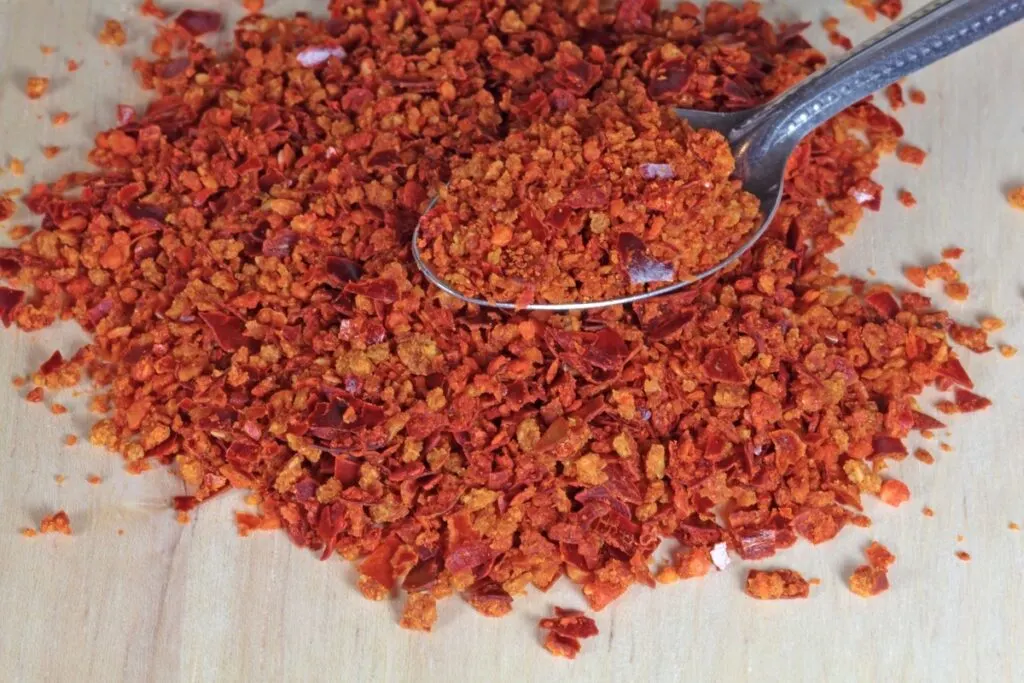
Hot Sauce
1 teaspoon of paprika = 1 teaspoon of hot sauce
Hot sauce is a well-used and perfect condiment for a convenient dash of spicy flavor. It’s generally made from chili peppers, vinegar, and spices and comes in different heat levels, ranging from mild to extremely hot. Using some of the best ways to thicken hot sauce can land you one of the best spreading, dipping, and sauce consistencies of all these swaps. But since it’s a liquid, you won’t be able to use it as a dry rub or any other powdered use you would have for paprika.
Smoked Paprika
1 teaspoon of paprika = 1 teaspoon of smoked paprika
Smoked paprika is a direct substitute for paprika with it being a smokier and richer version. This powder is a fantastic direct pick that offers everything paprika has and more. It’s made from smoked and dried red peppers, giving it that iconic smoky yet spicy flavor. Much like its less smoky brother, it contains vitamins and minerals, including vitamin A, vitamin E, and iron.
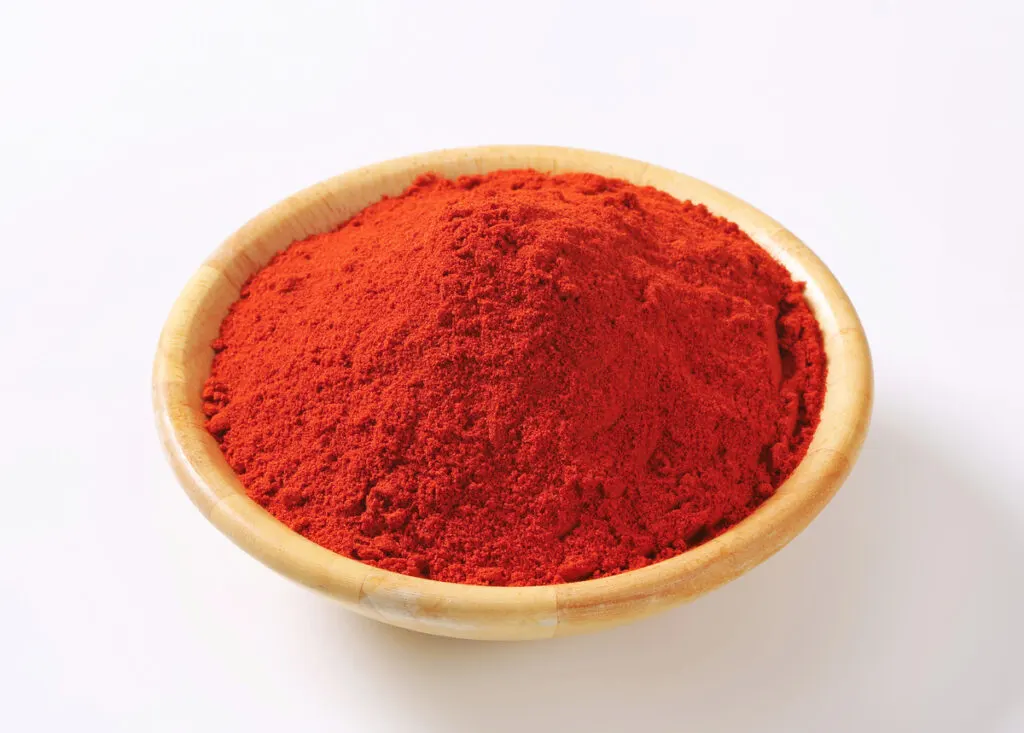
Ancho Chile Powder
1 teaspoon of paprika = 1/2 teaspoon of ancho chile powder
Ancho chile powder is a flavorful alternative made from dried and ground ancho chile peppers. The deep, earthy flavor with a mild, fruity sweetness and a subtle smoky undertone makes for a perfect paprika swap. This chili powder is a fantastic source of vitamins and minerals, including vitamin A, vitamin C, and potassium. If you have trouble finding this powder, you can use some ancho chile powder substitutes instead.
🧐 FAQs
Paprika has a slightly sweet and earthy flavor with a mild spiciness. The flavor can vary depending on the type of pepper used to make the paprika powder. Some types of paprika can have a smoky or fruity flavor as well.
Paprika is native to Central and South America, but it’s now produced in many countries around the world. Hungary is particularly known for its paprika production, and Hungarian paprika is often considered to be of high quality.
You can use chili powder, cayenne pepper, or smoked paprika. These spices can provide a similar flavor and spiciness to paprika and can be used in similar quantities.
